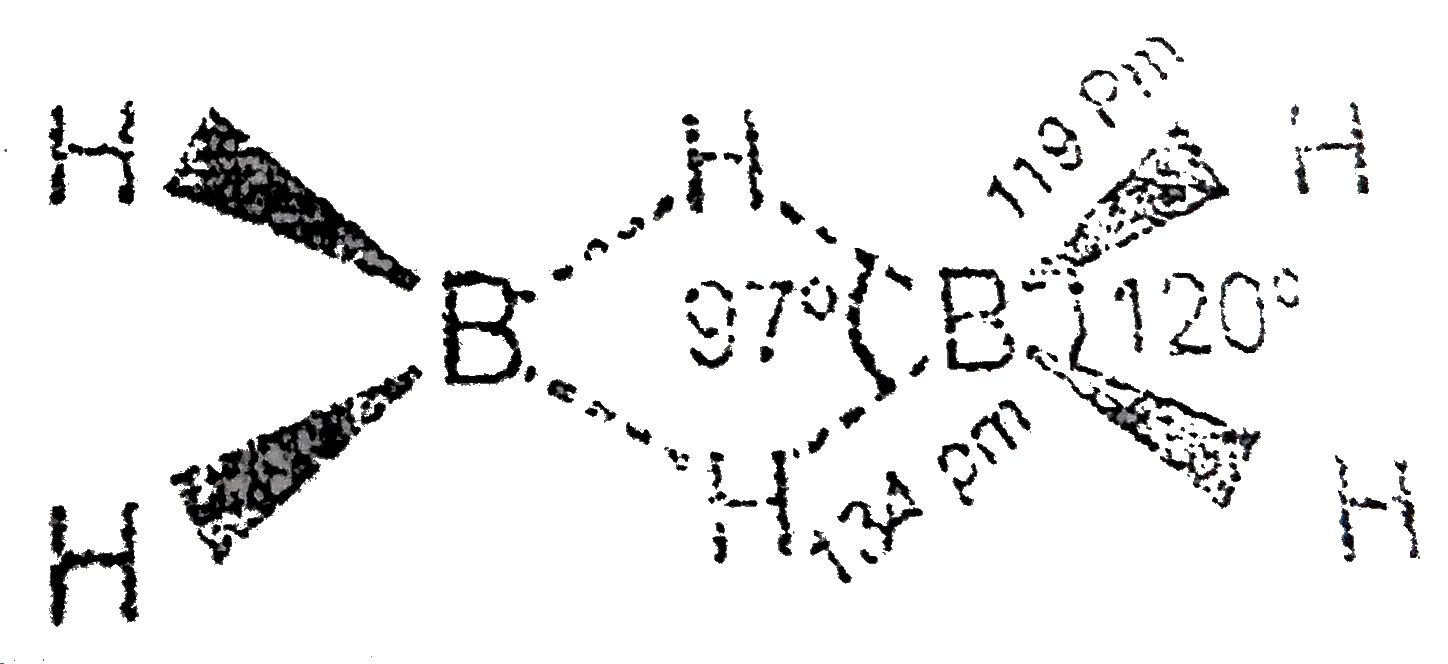Most elements form oxides and hydroxides with different characteristics. Often, regular periodic trends are observed in these oxides and hydroxides. Hydroxides of and are distinctly alkaline, while oxides of and are distinctly acidic.
Write the general formula of arachano-boranes.
The correct Answer is:B
Step by step video solution for Most elements form oxides and hydroxides with different characteristics. Often, regular periodic trends are observed in these oxides and hydroxides. Hydroxides of Na and Mg are distinctly alkaline, while oxides of N and S are distinctly acidic. Write the general formula of arachano-boranes. by Chemistry experts to help you in doubts & scoring excellent marks in Class 12 exams.
Updated on:21/07/2023Topper's Solved these Questions
- P-BLOCK ELEMENT (BORON AND CARBON FAMILY)BOOK - RESONANCE ENGLISHCHAPTER - P-BLOCK ELEMENT (BORON AND CARBON FAMILY)EXERCISE - PART - III : OLYMPIAD PROBLEMS (PREVIOUS YEARS) STAGE - V (INTERNATIONAL CHEMISTRY OLYMPIAD (IChO)) Problem 1
1 Videos
- P-BLOCK ELEMENT (BORON AND CARBON FAMILY)BOOK - RESONANCE ENGLISHCHAPTER - P-BLOCK ELEMENT (BORON AND CARBON FAMILY)EXERCISE - PART - III : OLYMPIAD PROBLEMS (PREVIOUS YEARS) STAGE - V (INTERNATIONAL CHEMISTRY OLYMPIAD (IChO)) Problem 3
8 Videos
- P-BLOCK ELEMENT (BORON AND CARBON FAMILY)BOOK - RESONANCE ENGLISHCHAPTER - P-BLOCK ELEMENT (BORON AND CARBON FAMILY)EXERCISE - PART - III : OLYMPIAD PROBLEMS (PREVIOUS YEARS) STAGE - II (INDIAN NATIONAL CHEMISTRY OLYMPIAD (INCHO)) Problem 1
11 Videos
- P BLOCK ELEMENTSBOOK - RESONANCE ENGLISHCHAPTER - P BLOCK ELEMENTSEXERCISE - PART -II
23 Videos
- P-BLOCK ELEMENTS (HALOGEN & NOBLE GASES)BOOK - RESONANCE ENGLISHCHAPTER - P-BLOCK ELEMENTS (HALOGEN & NOBLE GASES)EXERCISE - APSP PART-3
22 Videos
Similar Questions
Most elements form oxides and hydroxides with different characteristics. Often, regular periodic trends are observed in these oxides and hydroxides. Hydroxides of Na and Mg are distinctly alkaline, while oxides of N and S are distinctly acidic.
Draw the structure of B2H6.

View SolutionMost elements form oxides and hydroxides with different characteristics. Often, regular periodic trends are observed in these oxides and hydroxides. Hydroxides of Na and Mg are distinctly alkaline, while oxides of N and S are distinctly acidic.
Draw the structure of sulfur dioxide
View Solution
Knowledge Check
Two metals X and Y belong to the cond group of periodic table. X forms insoluble oxide but soluble sulphate. Y forms a soluble oxide but insoluble sulphate. Hydroxide of metal X is soluble in NaOH while that of metal Y is insoluble in NaOH. What are metals X and Y?
AX=Be,Y=BaBX=Mg,Y=CaCX=Ca,Y=SrDX=Ba,Y=Mg
Most elements form oxides and hydroxides with different characteristics. Often, regular periodic trends are observed in these oxides and hydroxides. Hydroxides of Na and Mg are distinctly alkaline, while oxides of N and S are distinctly acidic.
Draw the structure of B2H6.
The unusual bond present in B2H6is a-
(a)Two centered 3e− bond □ , (b)Three centered 2e− bond □
( c)Four centered 2e− bond □ , (d)Four centered 4e− bond □
B2O3acidicbasicamphotericneutralAl2O3acidicbasicamphotericneutralTl2O3acidicbasicamphotericneutral
View SolutionState the general trend in periodicity in properties of oxides, hydroxides, oxy-acids and hydrides of compounds of elements across a period and down a group.
View SolutionAn element of group 2 forms covalent oxide which is amphoteric in nature and dissolves in water to give an amphoteric hydroxide. Identify the element and write chemical reactions of the hydroxide of the element with an alkali and an acid.
View SolutionOn exposure to air, alkali metals get tranished due to formation of oxides, hydroxides and carbonates on their surface. When heated
in air or oxygen they burn vigourously forming different types of
oxides depending upon the nature of the metal. The formation and stability of these metals can be explained on the basis of size of
alkali metal ion and the anion. Peroxides are colourless, while superoxides are coloured. The normal oxides are basic while
peroxides and superoxides act as oxidising agents.
Na2O2 has light yellow colour. This is due to
View SolutionOn exposure to air, alkali metals get tranished due to formation of oxides, hydroxides and carbonates on their surface. When heated in air or oxygen they burn vigourously forming different types of oxides depending upon the nature of the metal. The formation and stability of these metals can be explained on the basis of size of alkali metal ion and the anion. Peroxides are colourless, while superoxides are coloured. The normal oxides are basic while peroxides and superoxides act as oxidising agents.
Oxone is
View SolutionOn exposure to air, alkali metals get tranished due to formation of oxides, hydroxides and carbonates on their surface. When heated in air or oxygen they burn vigourously forming different types of oxides depending upon the nature of the metal. The formation and stability of these metals can be explained on the basis of size of alkali metal ion and the anion. Peroxides are colourless, while superoxides are coloured. The normal oxides are basic while peroxides and superoxides act as oxidising agents.
On heating in excess of oxygen, potassium gives
View SolutionMagnesium is an element of group 2 of the periodic table. It forms compounds such as (i) magnesium oxide, MgO, (ii) magnesium hydroxide, Mg(OH)2, (iii) magnesium sulphate, MgSO4 and (iv) magnesium chloride, MgCl2. Calcium is also an element of group 2. Write the formulae of calcium oxide, calcium hydroxide, calcium sulphate and calcium chloride.
View Solution
